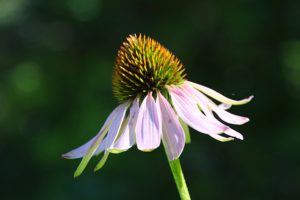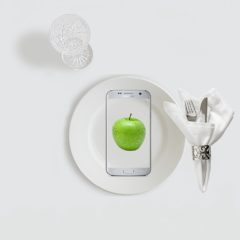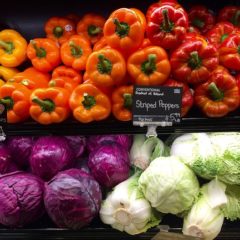I’m an amateur photographer, and in my spare time, I love to tramp through gardens, woods, marshes, and other scenic landscapes capturing the beauty of nature. I am happy shooting pictures of migrating birds, close ups of flowers and bees, and wide-angle landscapes of mountains or rolling grasslands. Here in Minnesota, fall has turned our lush green landscape dotted with orange, pink, and purple wildflowers into fields of yellow Goldenrod. It’s a little ironic, that as beautiful as Goldenrod is, I have a hard time wanting to photograph it knowing the misery that this plant causes millions of people.
For the poor souls who experience seasonal allergies, Goldenrod is the demon behind hay fever. For those susceptible, the beauty of this feathery yellow plant is lost to sneezing, itchy eyes, and used Kleenex. Many will turn to antihistamines, Neti pots, and supplements to tamp down their symptoms and get through the season.
 Interestingly, an antidote to hay fever is growing nearby in the form of a plant called Echinacea. Also called purple cone flower, Echinacea grows on the same hillsides and open fields as Goldenrod, although it peaks several weeks earlier. First used by Native Americans, Echinacea’s healing properties are well-known. As a raw herb, its leaves and flowers are made into tea to boost immunity. Echinacea is commonly used to fight colds, flu, and respiratory allergies, as well as to decrease inflammation.
Interestingly, an antidote to hay fever is growing nearby in the form of a plant called Echinacea. Also called purple cone flower, Echinacea grows on the same hillsides and open fields as Goldenrod, although it peaks several weeks earlier. First used by Native Americans, Echinacea’s healing properties are well-known. As a raw herb, its leaves and flowers are made into tea to boost immunity. Echinacea is commonly used to fight colds, flu, and respiratory allergies, as well as to decrease inflammation.
Echinacea and Goldenrod are considered to be companion plants, in that they tend to grow near each other. In their companion relationship, one plant is the offender (that would be Goldenrod), and the other offers up the antidote—Echinacea. If you began taking Echinacea at the peak of its bloom, ideally your immunity would be stronger just in time for hay fever season several weeks later.
Another companion plant pair is available if you happen to unlucky enough to brush up against some Poison Ivy, Poison Oak, and Stinging Nettles. The antidote to these toxic, rash-producing plants is growing nearby in the form of Jewelweed. Long known by Native Americans and herbalists alike, the leaves and juice of Jewelweed leaves can be used to treat rashes and calm itching and stinging from those nasty plants that you should never touch without gloves.
As a practitioner of acupuncture and Chinese medicine, much of what I know and use in my treatment room is based on patterns that are found in nature. I understand that each season offers us a theme, from the expansiveness of spring to the bright activity of summer and the nourishment that comes from the fall harvest to sustain us through the winter. I also know that when you become ill, it acts a bit like bad weather in your body. It can produce an inner heat wave in the form of a fever, a contraction of cold chills, and can even create unwanted movement, such as tremors or dizziness, where there should be calm.
As an herbalist, I also understand that herbs can be healing or toxic, and that sometimes they can be both. Modern medicine has developed many drugs that come from plants, but in the process of extracting a single active ingredient a powerful medication has been created, often accompanied by equally powerful side effects. In contrast, using a whole plant as an herb creates a gentler and more synergistic way to heal, as the countless compounds in each plant are there for a purpose.
The wisdom of nature has given us healing plants, often growing in your own back yard. And when I see Echinacea growing in the same field as Goldenrod or Jewelweed growing next to Poison Ivy—toxin and antidote side-by-side—I am convinced that Mother Nature has my back.



